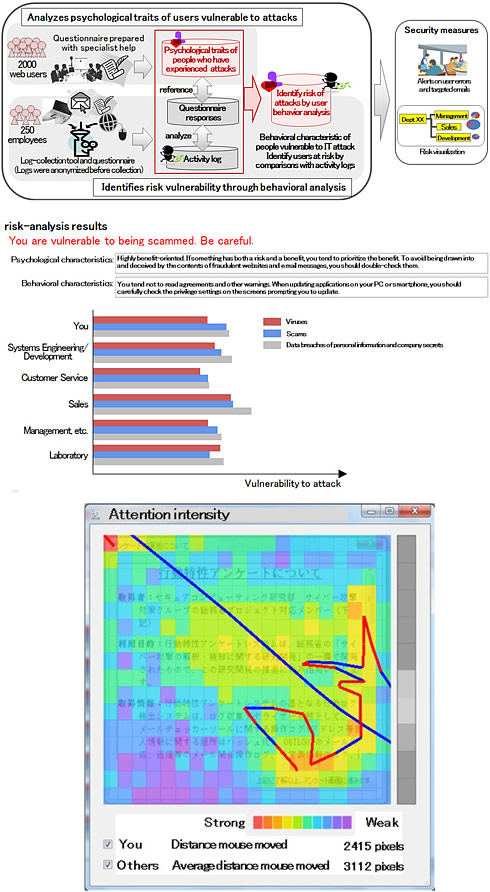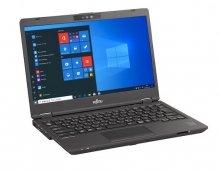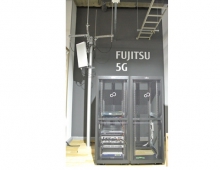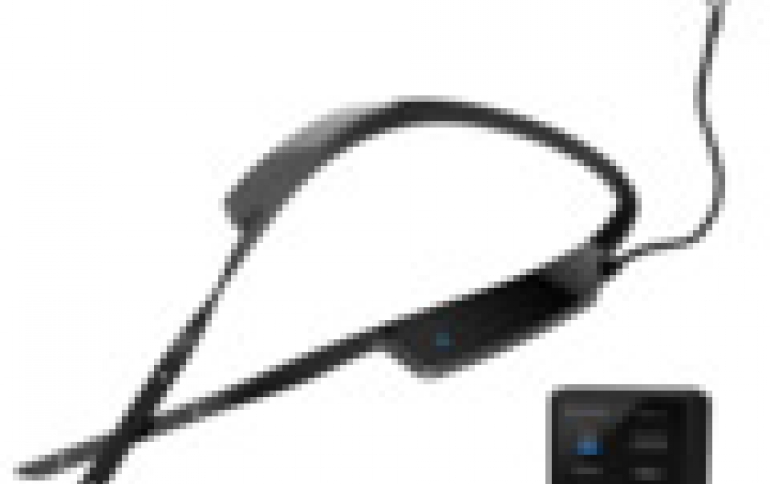
Fujitsu Develops Wearable For Safer Driving, Technology That Identifies PC User Behaviors Vulnerable To Cyber Attacks
Fujitsu on Monday announced the launches of FEELythm, a wearable sensor that promotes safer driving. The company also develope a technology for identifying users vulnerable to cyber attacks based on the ways they use their computers. FEELythm will initially be sold in Japan from February 2015, Fjitsu said.
It is a wearable sensor device that detects when drivers are drowsy based on their pulse. The product, which uses a proprietary algorithm developed by Fujitsu Laboratories, monitors the driver's pulse via a sensor attached to the earlobe, gauges drowsiness based on that, and notifies the driver and their vehicle fleet manager. It can also connect to digital tachographs and other onboard devices, and link to fleet-management systems so that fleet managers can monitor the conditions of their drivers in real time and provide helpful guidance based on objective data.
In the near future, the device will be possible to improve safe-driving management by predicting dangers before they occur based on an accumulation of sensor data indicating fatigue, stress, and tension, and applying that to a hazard map.
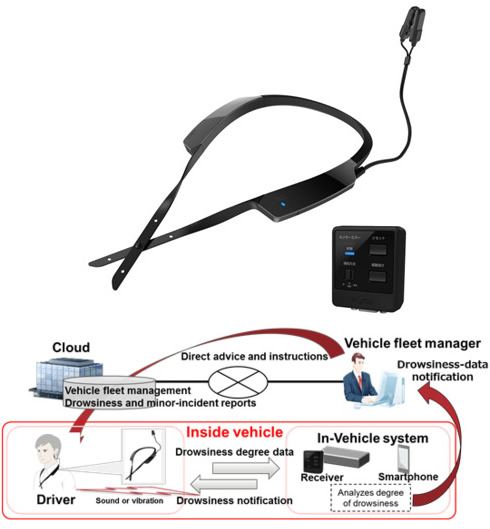
The main part of the device is worn around the neck and weighs only about 90 grams, and a sensor is attached to the earlobe to measure vital signs such as pulse rate and the autonomic nervous system. Fujitsu's proprietary algorithm determines the driver's level of drowsiness with a high degree of accuracy, and the device gives sound and vibration alerts to the driver. The device was designed with long-haul driving in mind, with battery capacity for five continuous days of operation.
In the future, Fujitsu will put to use hazard maps that compile and distill driver data and stress conditions in order to bring hazard prediction to fleet operations and expand support for driving-safety management.
Fujitsu's second announcement for today is an technology that identifies users vulnerable to cyber attacks based on the ways they use their computers, such as their e-mail and web activities. The technology could make it possible to implement security measures tailored to individuals and organizations.
While there are numerous security measures already in existence, the weakness that most cyber attacks and data breaches take advantage of is human error, such as, for example, when a user carelessly clicks on a malicious link in a faked e-mail message. Because this depends on individual traits, it is difficult to develop a standardized security measure to defend against it.
Fujitsu and Fujitsu Laboratories have used online questionnaires to identify the relationship between the psychological traits and behavior of people likely to suffer three kinds of attack: virus infections, scams, and data leakage. At the same time, based on activity logs on PCs, such as when the PCs freeze, they have developed a technology for calculating different users' risks of being victimized.
This technology could be used to precisely tailor security measures, such as, for example, by displaying individualized warning messages to users who often click on URLs in suspicious e-mail messages without checking them carefully, or escalating the threat level of suspicious e-mails sent between departments with virus-prone users.
In recent years, cyber attacks have been growing increasingly sophisticated, with attacks designed to exploit the psychological vulnerabilities of targeted users to defraud them or infect their PCs with viruses, such as by setting traps in email messages or websites designed to appear to be from trusted sources in line with the targeted user's interests or job duties. These kinds of attacks are often difficult to distinguish from ordinary network access, and are difficult to detect using conventional email filters and firewalls. Moreover, the accidental actions that are the main cause of information leaks will not simply go away.
Fujitsu's new technology makes use of social-psychology knowledge and identifies users at risk of cyber attacks based on the ways they use their computers.
Using an online questionnaire created with the help of experts in social psychology, the companies have analyzed the psychological traits of people vulnerable to three kinds of attacks: virus infections, scams, and data leakage. Participants consisted of approximately 2,000 employees throughout Japan ranging in age from their 20s to their 60s, male and female, who use their own PC to do most of their work, with half of them having previously experienced an attack.
The results of the analysis showed, for example, that people who prioritized benefits over risks (benefit-oriented people) were more vulnerable to virus attacks, and that people who were highly confident in their own ability to use a computer were at higher risk for data leakage.
The technology calculates a user's risk of suffering from an attack as a result of their behavior by clarifying the connections between behavioral characteristics when using a computer and the psychological traits that make them vulnerable to cyber attacks.
The companies also developed a tool that logs activity on a user's computer (email traffic, web accesses, keyboard and mouse actions), and a tool that creates false errors, such as the computer freezing up. Approximately 250 employees of Fujitsu filled out questionnaires, and this information was used to analyze and quantify the relationship between the psychological traits and behavior of a user vulnerable to attacks. For example, it was found that users who are highly confident in their ability to use a computer would often perform keyboard actions when the false freezes occurred, whereas benefit-oriented users would spend little time reading privacy policies.
Fujitsu says that the new technology reveals the security risks that individuals and organizations create, raises users' literacy on IT, and is the first step in devising proactive security measures tailored to the organization. For example, preventing data leakage via phishing emails by displaying warning messages to individual users who click links without checking the URLs carefully, or that escalate the threat level of suspicious email messages sent between departments with people who are especially vulnerable to being scammed.
Fujitsu and Fujitsu Laboratories aim to have a commercial implementation of this technology in 2016.

